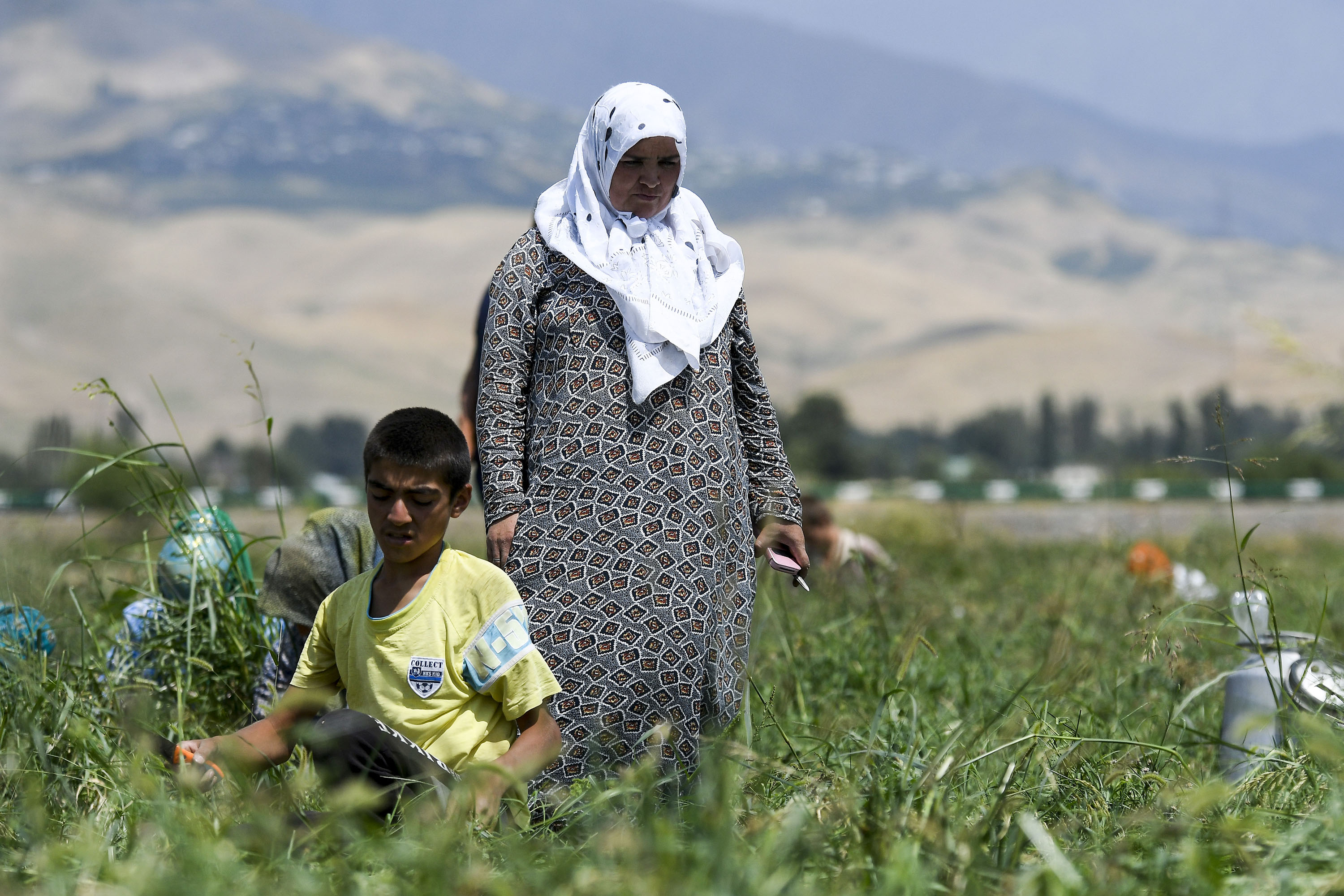Pasture management reforms yielding good results in Tajikistan

Tajikistan’s roughly 3.8 million hectares of pasture – almost 29 percent of its total land area – feed the country’s meat-producing livestock. But these natural resources, particularly year-round pastures near villages, are being depleted and degraded.
Since 2013, FAO and the International Fund for Agricultural Development (IFAD) have been working with the Government of Tajikistan on a livestock and pasture development project to halt land degradation and improve land management.
The project’s initial phase has aimed to increase the nutritional status and incomes of 22,400 poor households in the country’s Khatlon region by sustainably enhancing livestock production. Building on the success of phase one, the project’s second phase will now reach out to an additional 38,000 livestock-keeping households to help improve their productivity and strengthen their resilience to climate change.
The livestock and pasture development project is one result of Tajikistan’s 2013 Pasture Law, which serves as a foundation for decentralization reforms in pasture management.
Challenges for small-scale producers
Small household farms are especially vital to Tajikistan’s livestock sector and responsible for over half of national production. In some agriculture subsectors – such as meat, milk and vegetables – small farms contribute upwards of 80 to 90 percent of national production.
But the livestock sector faces challenges. Small-scale producers lack technical knowledge, pasture governance is poor, and management of community livestock is inefficient. Environmental degradation is exacerbated by climate change. During winter months, there is a shortage of feed and producers lack access to quality seed for growing their own fodder.
“The project is supporting Tajikistan’s reform process by facilitating policy and legal frameworks to improve pasture management,” said Frits Jepsen, IFAD Country Programme Manager for Tajikistan. “It is also introducing innovative practices like rotational grazing to small-scale livestock producers and strengthening veterinary services.”
Benefits so far
In its first phase, the project helped set up 203 pasture user unions in five districts of Khatlon, and develop 203 pasture use plans. Pasture user unions benefited from demonstrations on rotational grazing and training in livestock husbandry, financial management and accounting, and more.
More than 87,000 hectares of land are now under rotational grazing – a practice that can prevent overgrazing, improve soil fertility and increase forage production
“Rotational grazing brings the highest returns to the sector while addressing the issue of degradation,” said Anara Jumabayeva, an FAO senior economist. “It has extremely high potential for upscaling, and there is no cost except for a short training and awareness-raising exercise and the development of a rotational grazing plan. The benefits become clear within one grazing season.”
A total of 24 veterinary clinics were built and equipped, and 410 investment subprojects prepared. The latter are aimed at improving pasture and livestock development based on the priorities expressed by pasture users – including better infrastructure such as watering points, access roads and bridges.
Thanks in large part to these activities, livestock production has increased by 15 to 20 percent and some 330 permanent jobs have been created, mainly in livestock processing and machinery services in the targeted areas.
Pasture reforms in Tajikistan have also succeeded in engaging and giving a voice to pasture users, who stand to benefit the most from effective pasture management.
“The land certificate and project support have given our union a strong sense of ownership,” said Murodoli Kamolov, chairperson of the Momirak Pasture Users Union, referring to the land certificate granted by the provincial government conferring at least 49 years of inheritable land-use rights. “We are now managing our own resources and are committed to their sustainable use.”
